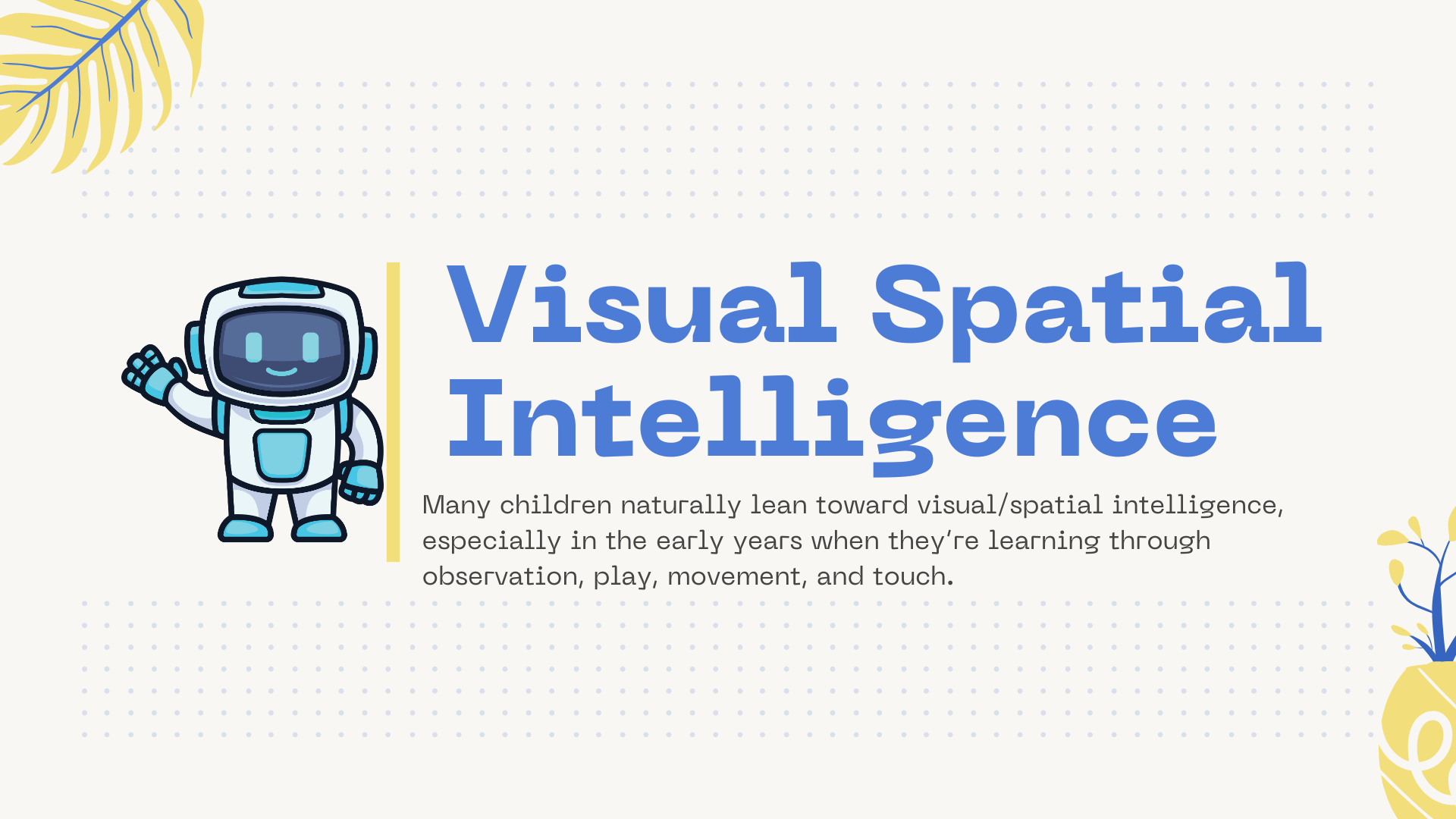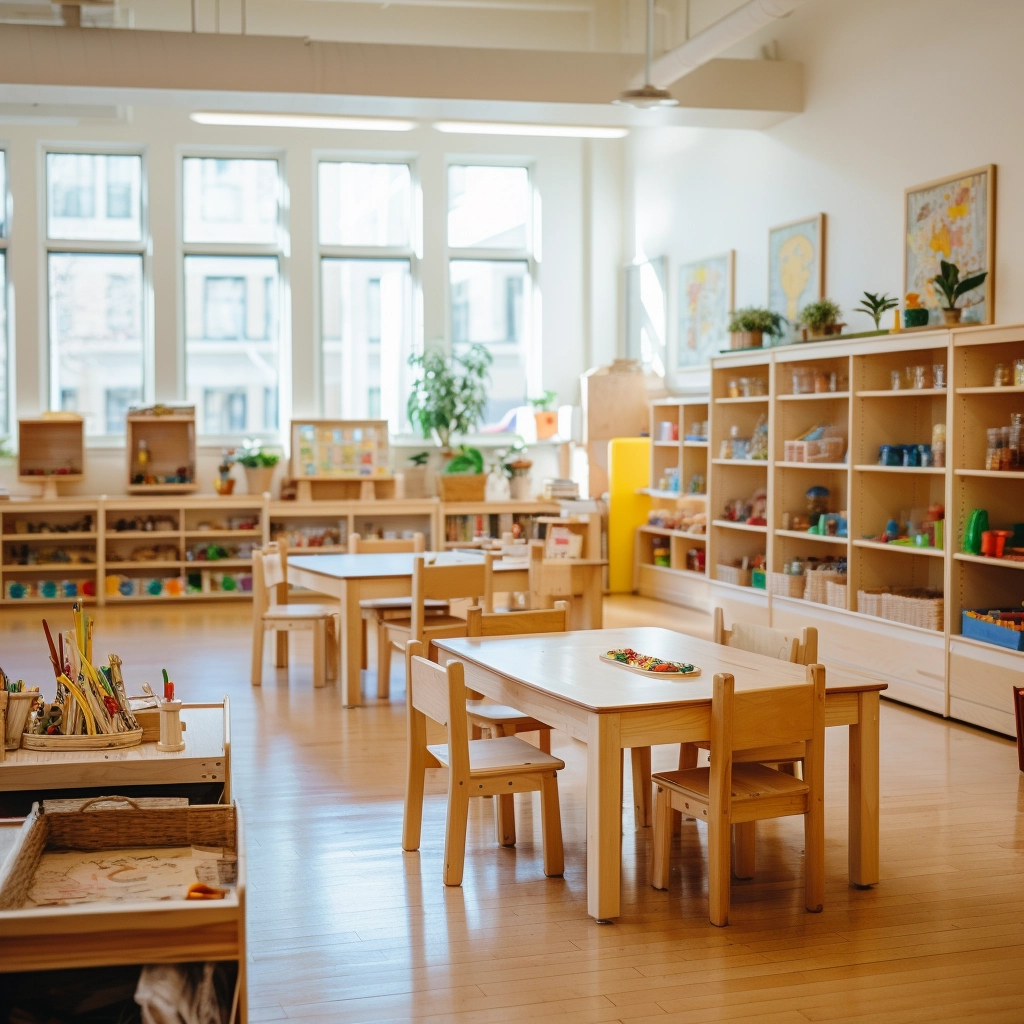Why do some children understand puzzles instantly, while others get lost following simple verbal directions? Why can specific learners mentally rotate 3D shapes or design structures from memory, yet struggle in traditional classroom tasks? If you’ve ever wondered why creativity thrives in some and stalls in others, the answer could lie in one powerful, often-overlooked skill: visual spatial intelligence.
Visual spatial intelligence is the ability to perceive, interpret, and mentally manipulate visual information. This essential form of intelligence fuels everything from problem-solving and spatial reasoning to artistic expression and STEM innovation. When overlooked in early childhood education, learners with strong visual spatial minds are left under-stimulated, misunderstood, and disconnected from traditional learning paths.
In this article, I’ll show you how to recognize, nurture, and unlock this incredible intelligence in young learners. Whether you’re an educator, a parent, or a school leader designing classrooms, we’ll explore proven strategies, activities, and environments that bring visual spatial intelligence to life—transforming how children learn, think, and express creativity from the ground up.
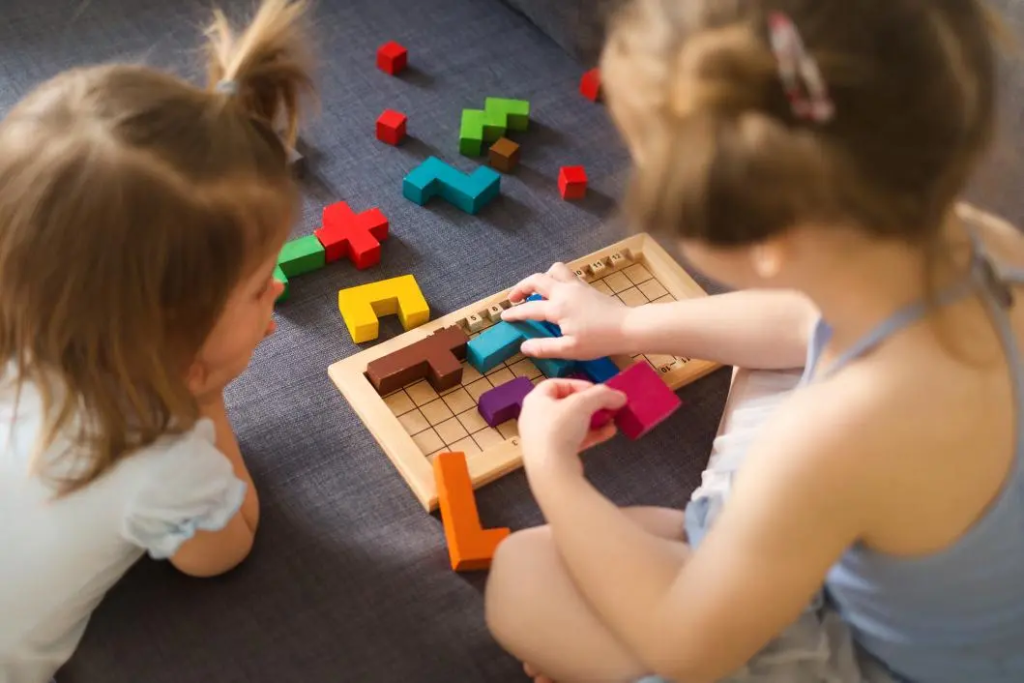
What is Visual and Spatial Intelligence?
When we talk about intelligence in early education, most people immediately think of verbal or logical reasoning, the kind that shows up in tests and textbooks. But there’s another type of intelligence that plays an equally decisive role in how children think, create, and solve problems: visual and spatial intelligence.
So, what is visual spatial intelligence, exactly?
At its core, visual spatial intelligence is the ability to perceive, visualize, and mentally manipulate objects and spatial relationships. It’s the brain’s talent for understanding how things relate to each other in space, whether it’s navigating a playground, assembling a puzzle, drawing a house, or mentally rotating a shape. This isn’t just about “being good at art,” it’s about how a child sees, understands, and works with the world visually and physically.
Importantly, this isn’t a rare gift. Many children naturally lean toward visual/spatial intelligence, especially in the early years when they’re learning through observation, play, movement, and touch. Unfortunately, traditional education systems often favor auditory and verbal learning, leaving these visual thinkers without the tools or encouragement to thrive.
هل أنت مستعد لتصميم مساحة تُلهم التعلم؟ تواصل معنا لتصميم حلول أثاث مُخصصة تُلبي احتياجات صفك الدراسي.
Why Visual Spatial Intelligence Is Important in Preschool?
A Critical Window for Cognitive Development
Visual spatial intelligence plays a fundamental role in shaping how young children begin to process and understand their environment. During the preschool years, children experience rapid brain development, and the cultivation of spatial and visual intelligence during this time has long-term effects on their cognitive flexibility, reasoning skills, and ability to navigate spatial relationships. Recognizing visual-spatial intelligence as a foundational ability allows educators to better align learning objectives with natural developmental trajectories.
Supporting Core Learning Domains
The development of visual and spatial intelligence directly supports essential learning domains such as early mathematics, pre-literacy, and fine motor skills. Skills associated with spatial visual intelligence, such as visual discrimination, spatial orientation, and mental rotation, are critical precursors to geometry, handwriting, and pattern recognition. Integrating spatial learning principles into preschool education enables a more comprehensive approach to school readiness and cognitive preparedness.
Reinforcing Equity in Learning Styles
Children differ significantly in how they acquire and apply knowledge, and visual spatial intelligence provides an essential alternative learning path for those who may not thrive in verbal or auditory-dominant settings. By embedding strategies that support visual spatial intelligence into early childhood education, educators create more equitable environments that value diverse learning profiles. This not only increases engagement but also fosters inclusion and cognitive diversity within the classroom.
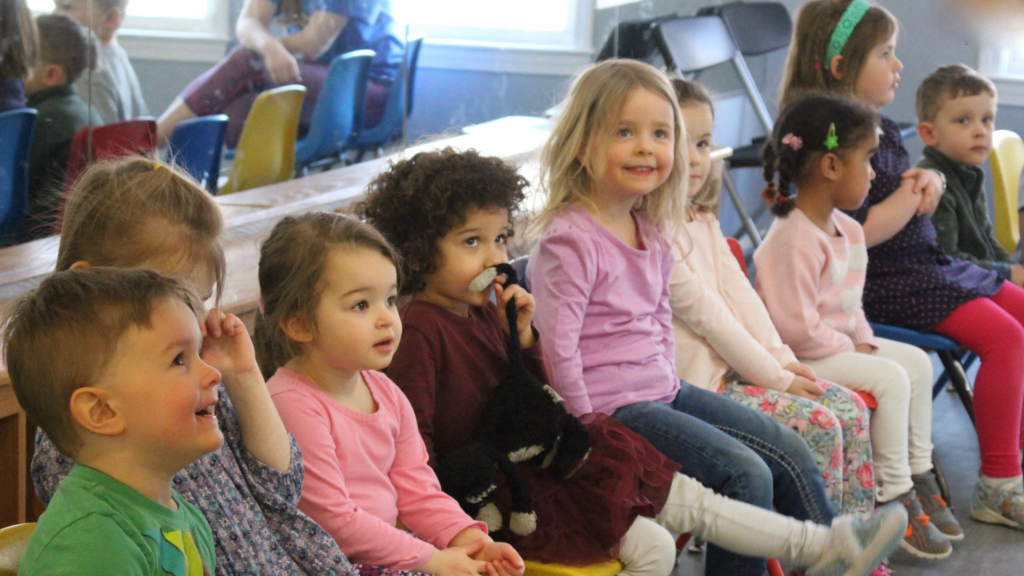
Visual-Spatial Skills in Everyday Daycare and Preschool Learning
Visual Spatial Intelligence Examples in Preschool-Aged Children
The preschool years provide many authentic opportunities to observe visual spatial intelligence in action. Below are clearly defined examples of how this intelligence appears in everyday learning activities:
- Reconstructing a design from memory
A child briefly looks at a pattern created with colored blocks and then accurately recreates it without further guidance. This demonstrates the ability to store and manipulate spatial images mentally — a key indicator of visual spatial intelligence. - Mentally rotating shapes to solve a puzzle
When working with geometric puzzles, a child successfully places rotated pieces into their correct spots without trial and error. This reveals advanced spatial and visual intelligence through mental rotation and shape recognition. - Arranging objects in balanced or symmetrical layouts
A preschooler aligns objects, such as toy animals or art materials, in even rows or mirror-like symmetry. This behavior indicates sensitivity to spatial organization and reflects a refined internal visual spatial framework.
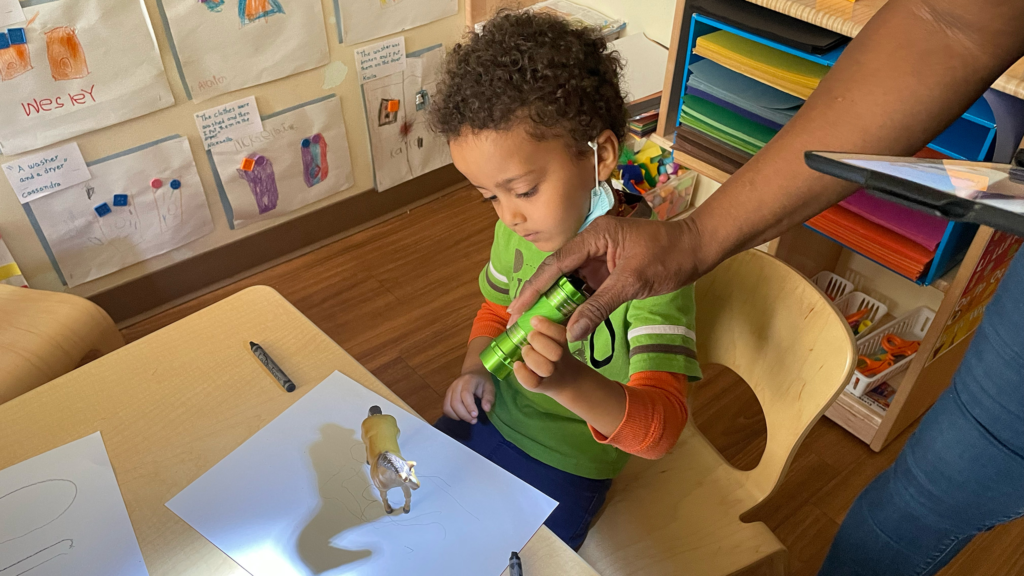
The Advantages of Visual-Spatial Intelligence
Visual spatial intelligence plays a decisive role not only in academics but also in daily life. It allows individuals to perceive and understand spatial relationships, solve problems visually, and move through the world with spatial awareness. Everyday activities such as tying shoes, navigating crowded spaces, or reading maps all rely on spatial visual intelligence. For young children, this skill emerges early through experiences such as catching a ball, imagining where a toy is before retrieving it, recognizing shapes and colors, or creating drawings. These are all early examples of visual spatial intelligence in action.
Because it develops naturally through interaction with space and materials, visual spatial intelligence should be nurtured from an early age. When children are given the right environment, tools, and activities, this intelligence strengthens over time and unlocks a wide range of abilities. Individuals with high visual spatial intelligence tend to be:
- Creative thinkers, using imagination and visual strategies to solve complex problems
- Strong in the visual arts, interpreting and producing artwork with spatial depth and visual clarity
- Good navigators, with a reliable sense of direction and the ability to remember locations visually
- Mechanically skilled, able to take things apart and reassemble them with a clear mental image of structure and function
- Visually analytical, comfortable interpreting diagrams, charts, and pictures in three dimensions
Developing Visual-Spatial Intelligence in Preschool Education
Preschool Spatial Intelligence Activities
Developing visual spatial intelligence in preschoolers requires intentional, hands-on experiences that allow children to observe, manipulate, and understand their environment. The following activities are specifically designed to enhance spatial and visual intelligence through exploration, repetition, and sensory engagement.
- Tangram Exploration
Tangrams are classic tools that help children strengthen spatial reasoning by arranging seven geometric pieces into a wide variety of shapes and images. As they rotate, flip, and match pieces to form animals, objects, or abstract forms, children are training their brains in visual spatial intelligence, particularly in mental transformation and pattern recognition. - Block Structure Replication
In this activity, children are shown a pre-built structure made of wooden blocks or unit cubes. After observing it for a limited time, they’re asked to build an identical version on their own. This develops visual spatial memory and the ability to mentally rotate and recreate forms, a key skill in spatial visual intelligence. - “Follow the Map” Classroom Navigation
Using a simplified map of the classroom or playground, children are tasked with finding specific objects or locations. This activity supports early navigation skills and teaches how to translate two-dimensional visuals into three-dimensional space, directly engaging visual/spatial intelligence through orientation and symbol interpretation. - Mirror Drawing and Symmetry Games
Children complete half-drawn images by mirroring the missing side using symmetry guides or real mirrors. This supports their understanding of balance, spatial layout, and proportion, which are essential concepts in both visual spatial intelligence and early geometry. - Shape Rotation with Pattern Cards
Children are given cards showing shapes rotated at different angles and asked to match or name the original orientation. This trains the child’s mental rotation ability, a core feature of visual spatial intelligence and a predictor of later success in math and design subjects. - 3D Model Creation with Loose Parts
Using natural or recycled materials such as corks, bottle caps, sticks, and stones, children are encouraged to create 3D forms like bridges, houses, or towers. This open-ended task builds spatial planning, form manipulation, and perspective skills, all of which support strong visual spatial intelligence development. - Floor Maze Obstacle Course
By designing simple mazes using tape or soft classroom materials, children physically navigate from point A to B, sometimes blindfolded or using verbal commands from peers. This reinforces kinesthetic spatial awareness and engages spatial and visual intelligence through movement, memory, and orientation. - Visual Sequencing with Story Tiles
Children arrange picture tiles in the correct order to tell a simple story, relying solely on visual cues. This boosts visual sequential memory and the child’s ability to process visual information in logical, structured ways, which is a key aspect of visual spatial intelligence activities in the classroom. - Map-Making from Memory
After exploring a defined area (e.g., the classroom or a garden), children are asked to draw a map from memory. This activity strengthens visual spatial recall and abstract representation, helping children transition from lived experience to symbolic thinking, which is central to multiple intelligences visual spatial theory.
Each of these activities not only supports visual/spatial intelligence development, but also promotes confidence in children who learn best through images, spatial patterns, and hands-on interaction with their surroundings.
Fostering Spatial Intelligence with the Right Environment
The physical learning environment plays a central role in how visual spatial intelligence develops in early childhood. A well-structured, aesthetically balanced classroom can act as a silent teacher — guiding children to understand space, movement, form, and relationships through direct interaction. When the setup encourages independence, order, and visual clarity, children are more likely to engage in activities that activate and refine their spatial and visual intelligence. Below are effective environmental strategies that support this developmental domain:
Defined Learning Zones with Clear Visual Boundaries
Dividing the classroom into distinct, visually organized areas — such as a math corner, art studio, and sensorial zone — allows children to associate each space with a different type of activity and cognitive process. This promotes spatial orientation, which is essential to visual/spatial intelligence, and helps form a strong internal sense of environmental layout.
Child-Height Open Shelving and Accessible Materials
Open shelving at a child’s level, with consistent material placement, reinforces visual spatial intelligence characteristics by allowing children to locate, retrieve, and return materials independently. This predictability supports memory, order, and the development of spatial systems in the brain.
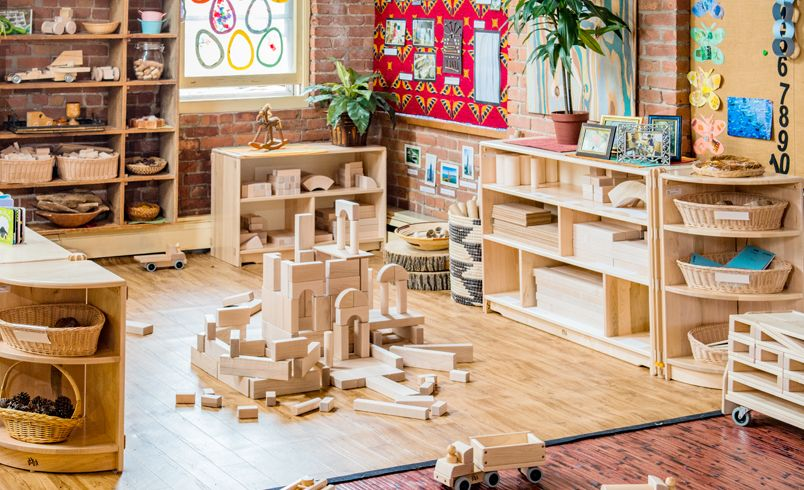
Minimalist and Uncluttered Design
Children with high visual spatial sensitivity often perform better in visually calm spaces. Simple design, clear surfaces, and a neutral color palette reduce cognitive overload and help children focus more effectively on spatial tasks and visual processing.
Materials Organized by Shape, Size, and Gradient
Arranging classroom materials from large to small, light to dark, or simple to complex encourages children to observe and internalize spatial sequencing and visual gradation. This supports spatial visual intelligence by reinforcing the brain’s ability to categorize, order, and visually compare.
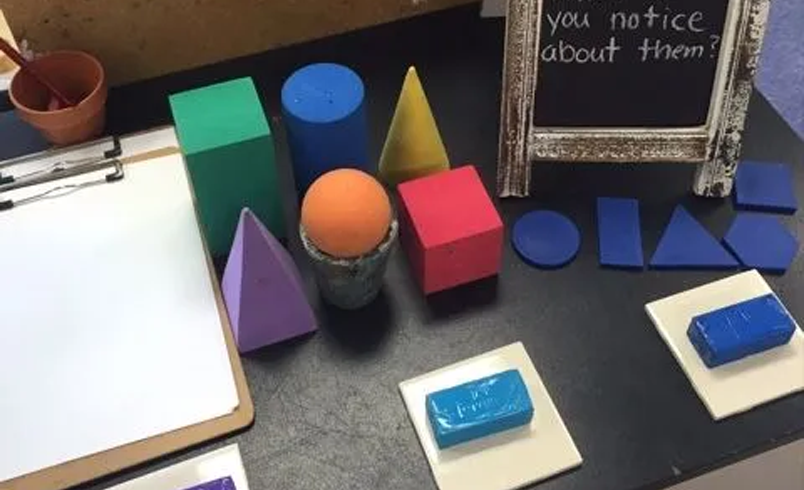
By designing early learning environments with visual-spatial development in mind, educators can create classrooms that not only support how children move and manipulate objects, but also how they think, remember, and problem-solve through space.
Tips to Enhance Visual Spatial Intelligence
While some children naturally exhibit strong visual spatial intelligence, all children benefit from purposeful strategies that strengthen spatial reasoning, visual memory, and mental manipulation. Preschool educators play a central role in creating experiences that target and refine these abilities. Below are effective teaching methods that can enhance visual/spatial intelligence through both direct instruction and exploratory learning:
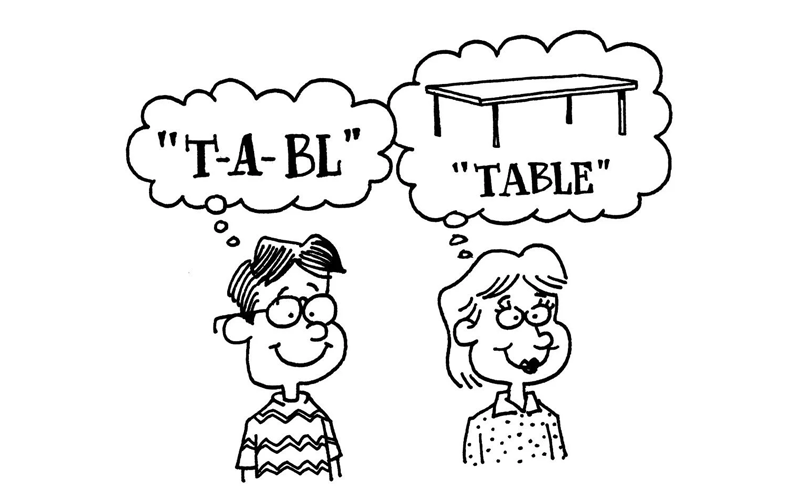
Model with Visuals Before Using Verbal Explanation
Children with visual spatial learning styles respond better when shown, not just told. Demonstrating tasks with physical models, diagrams, or step-by-step images allows these learners to internalize procedures visually, aligning with their dominant cognitive processing method.
Integrate Spatial Vocabulary During Activities
Incorporating words like “rotate,” “beside,” “under,” or “in front of” during daily routines builds the linguistic foundation needed to describe spatial concepts. This verbal reinforcement helps connect physical actions with mental representations, strengthening both language and visual/spatial intelligence.
Encourage Children to Explain Spatial Thinking
Inviting children to describe what they’re doing — for example, “Why did you put this piece here?” — encourages metacognitive awareness of spatial decision-making. Talking through their process helps them reflect on and refine their spatial reasoning strategies.
Rotate Materials and Layouts Regularly
Periodically changing the placement of classroom materials or rearranging learning areas prompts children to reorient themselves. This encourages adaptability, spatial scanning, and environmental awareness — all traits associated with visual spatial intelligence.
By embedding these techniques into daily routines, educators cultivate an environment where visual/spatial intelligence is not only recognized, but continually strengthened — allowing each child to develop a deeper, more confident understanding of how space, form, and pattern connect to learning.
Assessment: Identifying Visual-Spatial Strengths
Observing Visual-Spatial Intelligence in the Classroom
The most reliable way to identify visual spatial intelligence in preschoolers is through careful, structured observation during natural activities. Children often reveal their spatial and visual intelligence through how they solve puzzles, navigate space, or replicate patterns. Educators should pay close attention to behaviors such as mental rotation of objects, a preference for visual problem-solving, and a tendency to organize materials by shape, layout, or symmetry. These are strong indicators of visual spatial intelligence characteristics. Unlike traditional verbal assessments, observational insights provide a more accurate and authentic picture of a child’s visual-spatial strengths in a real learning context.
Informal Tools and Performance-Based Tasks
Beyond observation, teachers can apply simple performance-based assessments designed to highlight visual/spatial intelligence. Tasks like block structure replication, drawing geometric shapes, or completing visual sequencing cards help gauge a child’s ability to process spatial information mentally. Some educators use classroom-friendly versions of a visual spatial intelligence test, often adapted from standardized sources or available as visual-spatial intelligence test PDFs. These tools assess skills like visual memory, figure-ground recognition, and mental transformation. They are most effective when paired with observation and tailored to the developmental level of preschool learners.
Using Visual Work and Drawing as Evidence
Children with developed visual spatial intelligence often express their thinking through drawings, maps, diagrams, or symbolic designs. By examining visual outputs — such as a child’s attempt to reproduce a floor plan, recreate a pattern from memory, or represent a story through images — educators gain deeper insight into how the child processes and organizes visual information. These activities also reveal important visual spatial intelligence traits, including precision, attention to proportion, and sequencing. Reviewing visual artifacts over time allows teachers to track progress and identify strengths that may not appear in language-based evaluations.
Educational Toys That Support Visual Spatial Intelligence Development
Construction and Building Toys
Construction toys are foundational in the development of visual spatial intelligence, particularly in preschool environments. Materials such as wooden blocks, magnetic tiles, and interlocking building sets challenge children to visualize structures before physically assembling them. These toys strengthen spatial planning, 3D visualization, and mental rotation—key cognitive processes tied to spatial and visual intelligence. When children stack, align, or balance objects with intent, they begin to internalize relationships between shape, space, and form. This hands-on spatial manipulation is a direct way to engage visual/spatial intelligence while also nurturing problem-solving and design thinking at an early age.
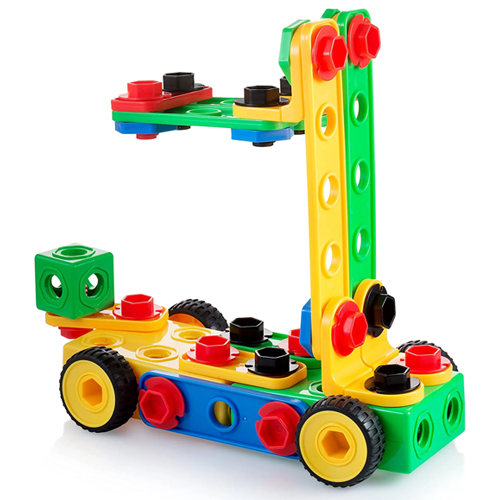
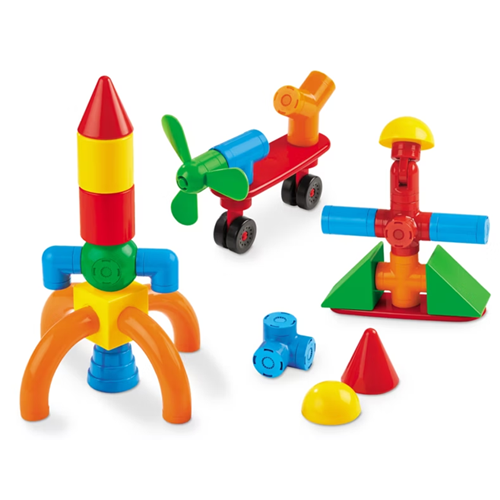
Pattern and Sequencing Toys
Toys that involve creating, copying, or continuing patterns are powerful tools for enhancing visual spatial intelligence skills. Bead sequencing kits, color pattern tiles, and Montessori cylinder blocks help children recognize and anticipate visual order. These activities require learners to focus on symmetry, repetition, and directionality, which are central to visual spatial learning styles. As children improve in these tasks, they strengthen their ability to mentally organize space and understand spatial sequences — essential components of both visual/spatial intelligence and early mathematical reasoning. These toys also prepare the brain for later spatial disciplines such as coding, design, and geometry.
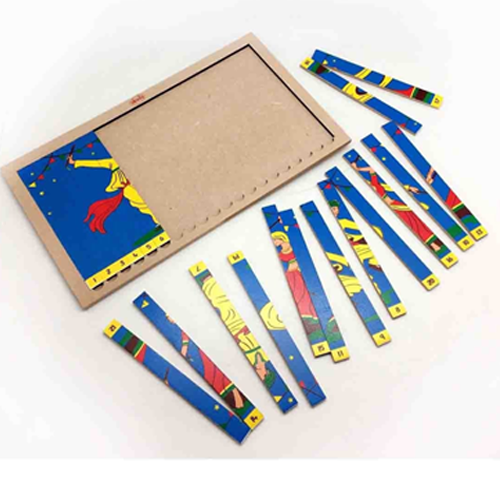
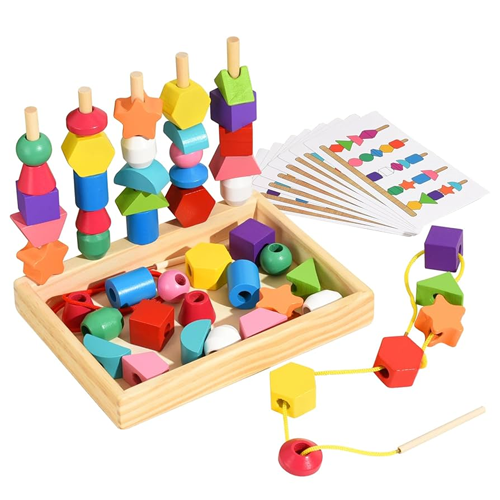
Puzzle-Based Spatial Toys
Puzzles are one of the most direct and effective ways to develop spatial visual intelligence in early childhood. From basic shape sorters to multi-piece jigsaw puzzles and tangrams, these toys engage visual discrimination, figure-ground recognition, and spatial rotation. When children test how pieces fit together — flipping, turning, and matching — they are engaging in one of the most valuable visual spatial intelligence activities available in the classroom. This not only improves visual memory and attention to detail but also teaches the persistence required for higher-level problem-solving. For children with visual/spatial intelligence characteristics, puzzles often feel intuitive and rewarding, reinforcing their natural cognitive strengths.
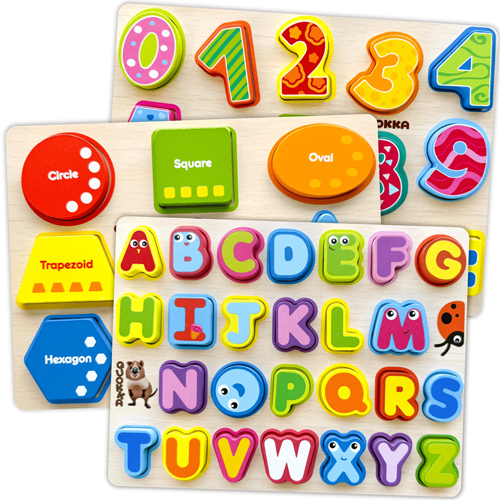
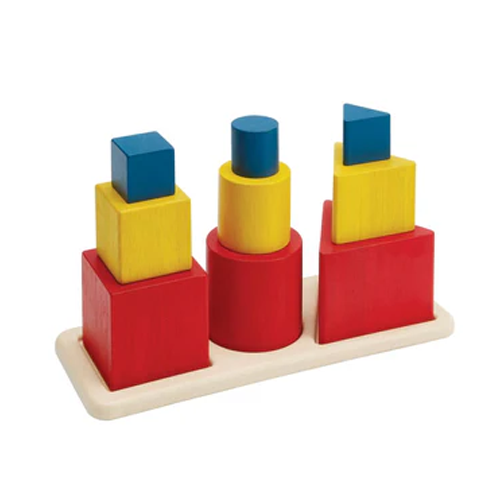
Movement-Integrated Spatial Toys
Physical movement can significantly amplify the development of visual spatial intelligence, especially when it involves navigating space or coordinating body movement with visual input. Toys and activities such as floor mazes, obstacle courses, balance beams, or stepping patterns integrate gross motor skills with spatial orientation. These tools help children internalize distance, direction, and position, further enriching their spatial and visual intelligence through embodied learning. Movement-based play aligns particularly well with kinesthetic learners who also show strong visual/spatial intelligence, providing them with a multi-sensory approach to understanding space. Integrating motion with visual learning strengthens both cognitive flexibility and spatial awareness.
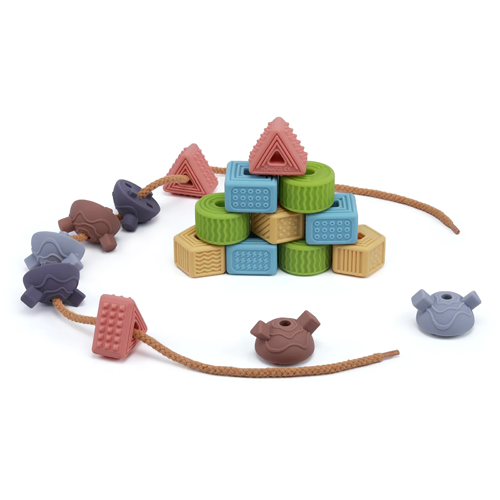
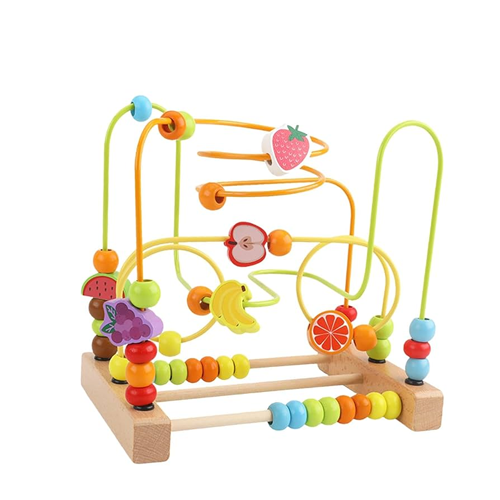
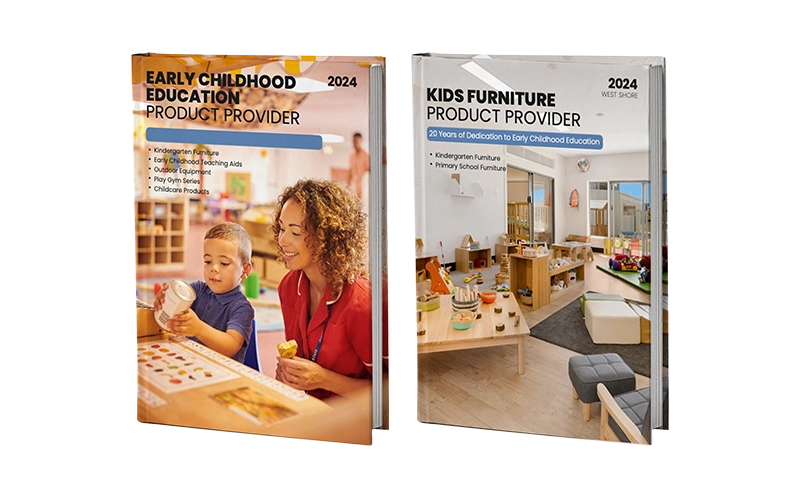
التعليمات
What are the weaknesses of visual-spatial intelligence?
While visual spatial intelligence supports creativity and spatial problem-solving, it can sometimes come with challenges. Individuals who rely heavily on visual/spatial thinking may find it harder to follow verbal instructions, process abstract language, or stay focused in text-based tasks. Without visual support or hands-on engagement, they may become disengaged. Balancing learning approaches can help strengthen weaker areas and ensure holistic development.
What jobs can people with high spatial intelligence do?
People with high visual spatial intelligence are naturally suited for roles that involve spatial planning, design, and 3D thinking. Careers such as architect, civil engineer, interior designer, pilot, surgeon, animator, and industrial designer all depend heavily on spatial reasoning and the ability to visualize complex structures. These fields reward strong pattern recognition and mental transformation skills. Early support in spatial learning can help direct children toward these high-skill professions.
Can visual spatial intelligence be improved?
Yes, visual spatial intelligence can be actively developed through structured practice and exposure. Engaging in activities such as block construction, puzzle solving, map reading, and drawing helps improve mental visualization, spatial awareness, and problem-solving. In early childhood education, providing consistent opportunities for visual-spatial tasks allows children to strengthen these skills naturally. Like other forms of intelligence, growth is possible with the right tools and environment.
How is visual spatial intelligence different from visual learning?
Visual spatial intelligence is a cognitive ability — the capacity to visualize, rotate, and manipulate spatial forms mentally. Visual learning, on the other hand, is a learning preference that involves understanding information best through charts, images, and diagrams. While they often overlap, a person can be a visual learner without having strong visual/spatial intelligence, and vice versa. Understanding this distinction helps educators design strategies that meet both cognitive and stylistic needs.
خاتمة
Visual Spatial Intelligence is a powerful and often underestimated component of early cognitive development. It helps children mentally visualize space, solve problems with images instead of words, and understand the physical relationships between objects. From early activities like catching a ball or drawing shapes, to interpreting graphs or mentally rotating objects, visual/spatial intelligence forms the foundation for many academic and real-world skills that extend into adulthood.
To fully nurture this type of intelligence, children need more than abstract instruction — they need environments designed with intentionality. Classrooms that support spatial visual intelligence emphasize clarity, movement, and access to hands-on materials. Purposefully arranged zones, well-organized learning tools, and freedom to explore in three dimensions all contribute to stronger spatial reasoning and more confident visual learners. These are not only educational strategies but also necessary conditions for children to thrive through their preferred ways of thinking.
That’s why the physical classroom setup matters so much. In high-quality early learning spaces, the furniture itself becomes part of the learning experience. Companies like أثاث ويست شور, with a strong focus on child-centered design and functionality, help create classroom environments that don’t just accommodate children — they stimulate them. Through thoughtful layouts and materials that align with Montessori and Reggio approaches, they support the natural development of visual spatial intelligence in ways that are subtle, effective, and lasting.

